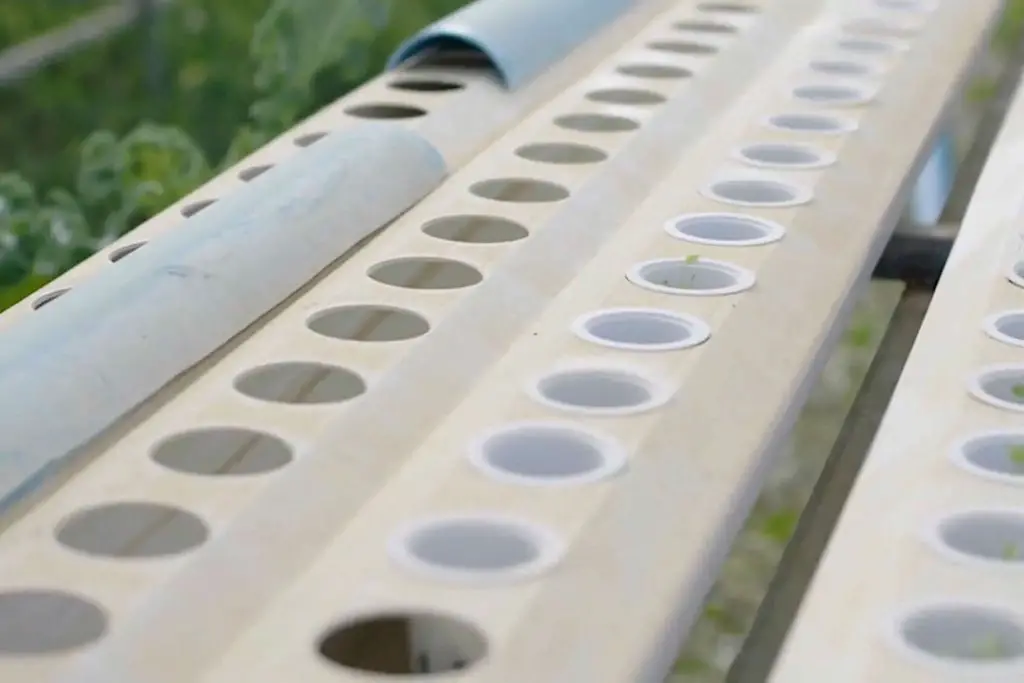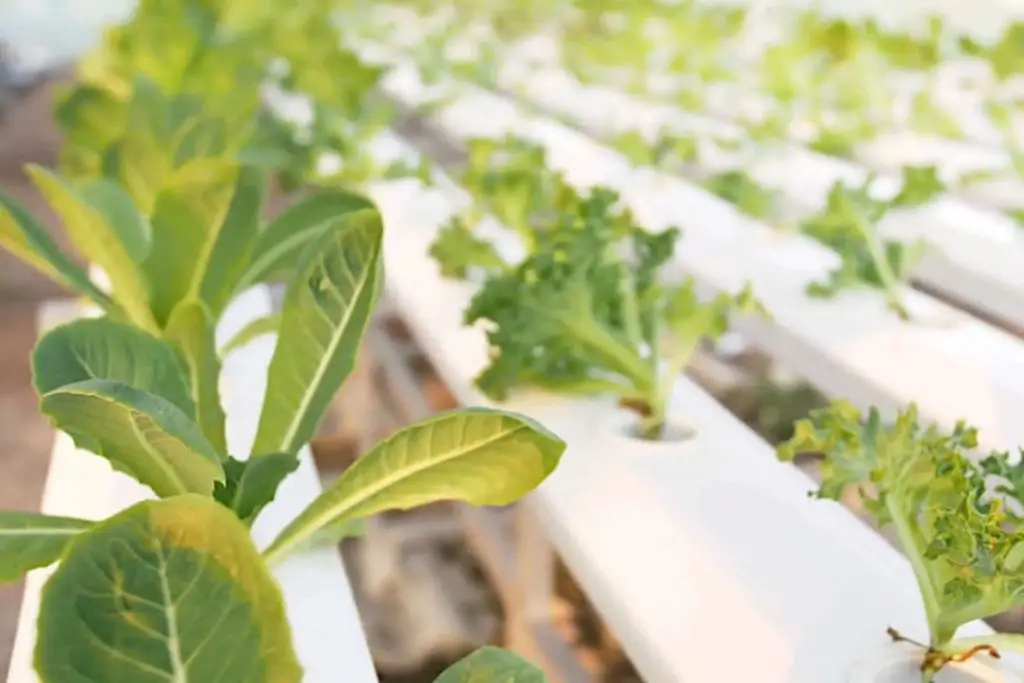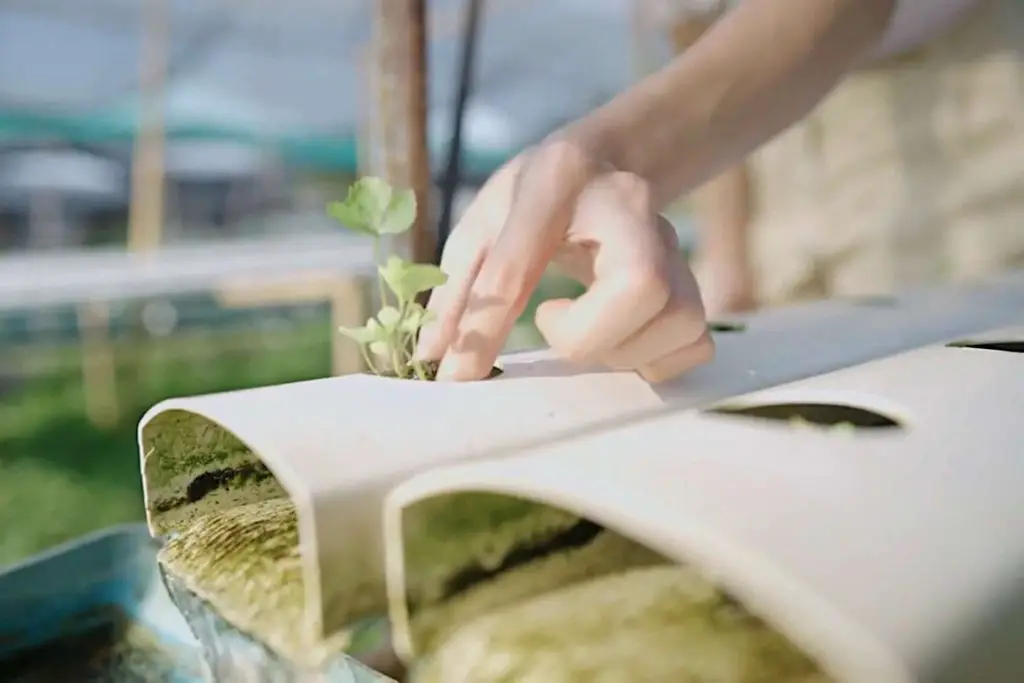Hydroponics DIY: Growing Your Plants Using the Nutrient Film Technique (NFT)
Hydroponics is a method of growing plants without dirt-based mediums and is one of the most popular alternative growing methods used today. There are several different types of hydroponic systems and the Nutrient Film Technique is one of these systems.
The nutrient film technique (NFT) is a type of hydroponic system that delivers nutrients to plant roots using water as a delivery mechanism. This method does not require soil, composting, or digging making it easier to transport and store.
You can use this technique to grow plants without dirt-based growing mediums. In this article, we will look at how the system works and discuss its benefits and drawbacks.
The nutrient film technique (NFT) is a hydroponic system that uses water to deliver nutrients to plant roots. It is similar to the ebb and flow technique, except that with NFT water is pumped around in a continuous flow. This method is ideal for plants that do not need a lot of root space and can be easily transported and stored. You can use this technique to grow plants without a dirt-based medium, and without the need for special equipment. All you need is a pump, a hose, a pipe and some pots.
What Is NFT Hydroponics?

The Nutrient Film Technique (NFT) is a method of hydroponic gardening that utilizes a constantly flowing solution of nutrients to nourish plants. NFT systems are typically used without dirt-based growing mediums, as the roots of the plants are able to directly absorb the nutrients from the solution.
The NFT hydroponic system utilizes micro-irrigation to provide a ‘shallow flow’ of a nutrient solution. This shallow flow creates a film of nutrient-rich water to which the roots of the plants sit. The plants grow in this nutrient stream, because of the root’s constant exposure to the flowing nutrient solution, feeding them the nutrients they require.
The system is very efficient in terms of your water and nutrient usage, as the solution is recirculated. In addition, you can have multiple channels stacked upon one another making it effective in terms of space utilization. NFT systems can be used to grow a variety of plants, including vegetables and herbs.
How Does Nutrient Film Technique System Work?
The beauty of the nutrient film technique is that the system is flexible. It can be as simple or complicated as you like, going from using one channel to having multiple channels stacked or laid out in any configuration that allows the nutrient solution to flow without being hindered.
The nutrient film technique relies on a special nutrient solution to grow plants. Unlike traditional aeroponic systems, where roots are suspended in air, the lower part of a plant’s roots sits directly in the solution that flows through the channels. The nutrients are delivered through this solution allowing the plants to draw up through capillary action and absorb nutrients directly.
The solution is initially added to a reservoir and flows through the channels with the aid of and pump and/or gravity, depending on the design, before returning to the reservoir where it is recycled and passed through the system again in a continuous flow.
The plants in a nutrient film technique system are situated in holes in the top of each of the growing channels, so the roots are suspended above the nutrient solution inside the chamber while the crown of the plant sits above.
What Are The Components of An NFT Hydroponic System?

There are several components that are required to build a nutrient film technique system. The good news is that they are easily available at most hardware stores. Alternatively, there are several inexpensive kits that you can purchase that include everything you need.
The components needed to create an NFT hydroponic system include a reservoir, a pump, tubing, filters and net pots to hold the plants, and of course the nutrient solution.
The Reservoir for A NFT Hydroponic System
The reservoir holds the water and nutrients needed to grow plants. This nutrient solution is pumped through the system in a continuous flow. The tubing connects the reservoirs together and carries the water to the channels.
If you are using a system of stacked channels the position of the reservoir can impact on the workload of the pump. If it is positioned well below the channels then the pump will have to work harder to return the nutrient fluid pack to the top of the channel system.
With pre-bought systems, you often don’t get much choice with regard to positioning and you may find that you might have to upgrade the pump after a few months of use. If designing and building your own NFT set up, position the reservoir close to the middle of the stack in terms of height.
Nutrient Solution
The nutrient solution is absolutely key to enabling the plants to grow and thrive. There are many ways to do it from commercial solutions to nutrient solutions that you craft at home.
Making a proper nutrient solution for an NFT system can be a time-consuming procedure, requiring consideration of such factors as the kind of water used and the nutrient requirements of various plants. It is advantageous to prepare the solution ahead of time and kept properly can be stored for extended periods of time.
It is critical to know precisely what the plants you are feeding require in terms of nutritional levels and ratios. Plants need nitrogen, phosphorus, and potassium in order to flourish but the levels required vary between plants. Lesser nutrients such as calcium and magnesium also need to be considered. Although usually present in mains water supplies, if you are using distilled or filtered water they will be absent and will need adding back.
There are several additives that can help with the absorption of the nutrient solution into the plant. Fulvic acid and probiotics may both improve the root zone environment by boosting the quantity of helpful bacteria present, which in turn improves the plant’s ability to absorb nutrients. Adding potassium silicate can also be added which helps with the strengthening of the cell walls of your plants and fighting off pests.
You can read more on preparing nutrient solutions for Nutrient Film Technique hydroponic systems here.
Water Pump & Tubing
To get the water to circulate through the system you will need a water pump. While in stacked systems gravity will help with the circulation you still need to return the nutrient solution to the reservoir.
The most common type of water pump used in NFT hydroponics is a centrifugal pump. This type of pump uses impellers to push water around inside the pump’s housing. Centrifugal pumps are usually driven by electric motors. They are very efficient, but require power to operate.
The second type of pump often used is known as a submersible pump. Submersible pumps use a mechanical diaphragm to move water. These pumps are less expensive to buy but they work much less efficiently than centrifugal pumps do.
There are many different types of tubing available for hydroponic systems. Some tubing is designed specifically for use with air pumps, while others are suitable for both air and liquid pumping. There are even some designs that allow you to change the flow rates of either air or liquid without having to replace the entire tube.
Growing Channels for Nutrient Film Technique Hydroponics

The growing channels and their design is one of the most important parts of any NFT hydroponic system. Good channel design will allow for proper nutrient distribution and helps reduce waste build-up whilst providing a sturdy foundation for plants to grow on.
A growing channel is a tube on which the plants grow. In theory, they can be any length with some industrial solutions having channels of around 30 to 40ft long. However for most homeowners or small growers channel of around 3-5 ft long will work just as well. In fact, short channels are easier to align and also reduce the amount of water required for irrigation.
The channels are usually constructed from uPVC with a diameter of between 2½”- 5″. Drain pipes can work well but they will need to be uPVC as standard PVC pipes will need replacing at regular intervals as they degrade.
The hole size for plants will generally be 2″ or 3″ in diameter but will depend on the size of the basket holders you use. The gaps between the plants should allow for sufficient space for roots to develop without causing damage to the plant. Generally, 2″ to 3″ between the outer edge of the holes is sufficient.
if you don’t have enough room, consider building multiple channels to allow for growth, rather than use smaller gaps.
Baskets/Containers To Hold Plants
Holding your plants securely is an important part of the NFT system. Net pots are a great solution for this. They help with the management of growing plants in small spaces. They are good because they offer excellent ventilation and drainage and provide structure for plant growth without competing with it. This makes them ideal for hydroponic systems, which require less moisture and nutrients than traditional soil gardening.
However, many people think that net pots must be used in deep-water culture systems. While the roots in those systems do benefit from added medium, the rest of the pot does not. In fact, adding too much medium can cause problems, such as root rot. It is important though when using use net pots in your NFT system, to make sure that the roots have enough space to grow naturally.
Lighting for Nutrient Film Technique System
Generally speaking, if you are setting your system up outside or in a greenhouse then natural light will take care of the plant’s blue and red light needs, although some plants will prefer more light than others.
If you are growing indoors then you will need a lighting source to provide the light that the plant needs to grow. There are a number of grow light solutions available that will allow photorespiration. These provide small amounts of ultraviolet and infrared light that are needed to encourage chlorophyll (Blue Light) and help with see germination (Red Light).
Although these lighting rigs can be expensive you can get very good grow light fixtures that will do a good job for under $100.
Flow Rate And Channel Slope for Nutrient Film Technique System

The next task is to angle the growing channels so that they have a gentle slope. The slope allows the nutrient solution to flow easily as gravity pulls it through the system and helps oxygen dissolve into the solution. If the slope is too steep though, the nutrient solution will move too quickly not providing an even film.
Getting the angle of the slope right allows for even growth rates across the board while maintaining optimal conditions for plant health. However, there are several design considerations that affect how much slope needs to be applied to channels, one being whether you are growing various different species as you will have to accommodate different plant heights into the equation.
In the most effective systems studies have shown that a slope of around 4% is the optimum slope to allow the most oxygen to dissolve into the solution. There are considerable differences in oxygen absorption between this 4% angle and shallower slopes. This is important because oxygen is one of the main factors in determining crop yield.[1] This should therefore be kept in mind when designing your system.
Reasons to Choose NFT Hydroponics System?
The reason why the nutrient film technique is so popular today is that it requires no soil, no composting, and no digging. This method allows you to grow plants without dirt, making it easier to transport and store. You don’t even need to buy special equipment; you just need some pots, a pump, and a hose. Or If you don’t have the time or want to go to the trouble you can buy a ready-made system. Kits for these start from well under $100
The nutrient film technique is simple and easy to use. All you do is place the plant roots into the nutrient solution, and let nature take over. Plants get their water, oxygen, and nutrient requirements from the nutrient solution. There is no need to worry about pH levels because the system automatically maintains a perfect balance.
The main advantages of NFT hydroponics systems are:
- – It is inexpensive to get going with
- – Easy setup and maintenance
- – Controlled environment to grow in
- – Fairly hands-off process
- – Less water consumption
- – No soil/dirt is required
What Are The Drawbacks of Nutrient Film Technique Hydroponics?
NFT hydroponics is a great way to grow plants, but there are a few things to keep in mind if you’re thinking of using this method. In addition, there are some plants, particularly fruit-bearing plants that are not necessarily suited to standard NFT hydroponic systems.
General Drawbacks to Using NFT Hydroponics
- Firstly, NFT hydroponics is electrically reliant, so if there is a power outage or pump failure, your plants could be seriously harmed.
- Secondly, the roots of your plants will quickly dry out if the system goes down, so it’s important to have a backup plan in place.
- Thirdly, NFT hydroponics is best suited for fast-growing plants like leafy greens, as the roots of larger plants can quickly clog the system.
Problems Growing Specific Plants Using NFT Hydroponics
If you are looking to grow fruiting or blooming plants in a nutrient film technique hydroponic system, there are a number of issues that you need to be aware of.
The first issue is that, because these plants consume a lot of nutrients, they can impact the pH and nutritional levels of the recirculating solution. It is important to closely watch the nutrient and pH levels of the solution on a regular basis and adjust accordingly so that the plants continue to receive the nutrients they need whilst the solution’s pH stays balanced.
The second issue to keep in mind is that most fruiting and blooming plants thrive better when they’re allowed to dry out between watering cycles. This is because the consistent hydration provided by an NFT system can actually hinder plant growth. Allowing the plants to dry out a bit between watering cycles will help them to grow more vigorously.
So, if you’re growing fruiting or blooming plants in an NFT system, remember to closely monitor the recirculating solution and to allow the plants to dry out between watering cycles. Doing so will help your plants to thrive and produce a bountiful harvest.
Final Thoughts: Nutrient Film Technique Hydroponic System
There are many reasons to look at using the nutrient film technique to cultivate your plants. It is straightforward to understand, that there are no issues with various soil types to deal with, it is easy to build or buy and inexpensive to get into.
In addition, the NFT hydroponic system can help to reduce production time and increase the quality of the crops produced. This is because the NFT system provides a controlled environment in which the plants can be grown. This level of control can help to ensure that the plants receive the ideal amount of nutrients and are grown in the ideal climate.
There are of course some drawbacks. Its reliance on a constant power supply is one of the main issues. Furthermore, not all plants will thrive in this system. It is particularly good for leafy green crops but if you’re growing fruiting or blooming plants in an NFT system, adjustments and a less hands-off approach as with closer monitoring of the recirculating solution would be needed, and the ability to allow these types of plants to dry out between watering cycles.
Getting the NFT hydroponics system right though will result in your plants thriving and producing fantastic crop yields.
Notes:
[1] American Society for Horticultural Science, Roberto López-Pozos: The Effects of Slope and Channel Nutrient Solution Gap Number on the Yield: https://journals.ashs.org/downloadpdf/journals/hortsci/46/5/article-p727.pdf
